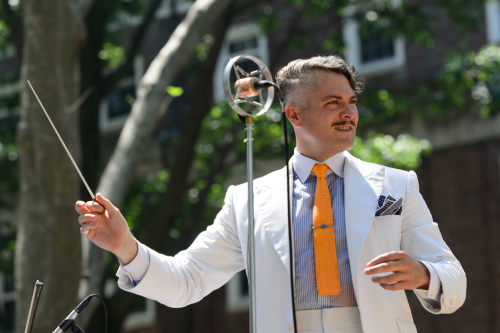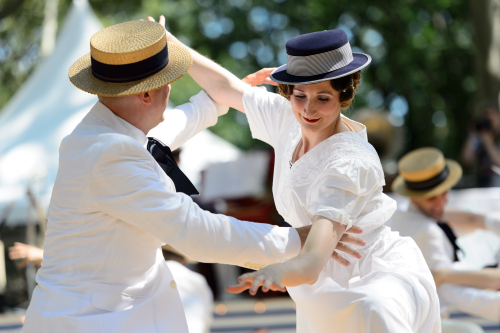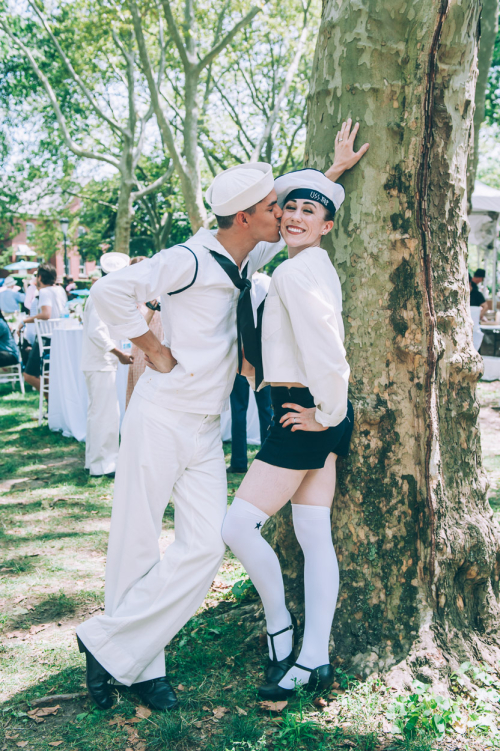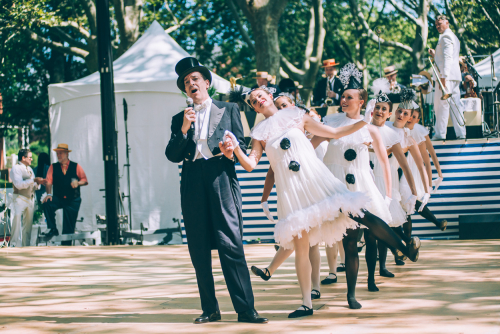The annual Jazz Age Lawn Party, a two-weekend event that now takes place each summer on New York's Governors Island, is as much about the revival of lost taste as it is about the revival of lost music. Over a recent hot summer weekend, the curious spectacle of the event, in which not only the performers but most attendees dance and picnic in period attire, presented its own genteel challenge to the cultural status quo. Not unlike the ancient Roman holiday of Saturnalia, where customary roles were temporary reversed, the Lawn Party presents a space where modern conventions get overturned. Yet in our upside-down times, the difference here is that the world inside the Jazz Age venue is the dignified, social reversal of our otherwise Saturnine culture.
We have Michael Arenella, the Lawn Party's impresario and bandleader of its Dreamland Orchestra, to thank for growing this remarkably interesting and attractive happening from a small gathering in 2005 of "fellow torch carriers of a by gone era" into a cultural touchstone—and the late photographer Bill Cunningham for documenting its emerging manifestations each year.
The Lawn Party's popularity speaks to the shape-shifting, skin-changing nature of our Millennial generation, who make up a majority of its attendees. Feeling understandably little allegiance to their given time and place, they look for better ones. Certainly, their broadcasted experiments in self identification may descend into narcissism. Yet as a cultural indicator, the Jazz Age Lawn Party offers a hopeful sign that they also grasp for the return of a culture of manners.
At least set to the music of Arenella's Dreamland Orchestra, along with Queen Esther, Molly Ryan, Gregory Moore & the Dreamland Follies, and Roddy Caravella & The Canarsie Wobblers, all spread over two stages, the Jazz Age Lawn Party offers an afternoon of elegant escape that, we can only hope, may again become the norm.







![Big-oil-bubble-karamay-3[2] Big-oil-bubble-karamay-3[2]](http://static1.squarespace.com/static/57c5f1cee58c62365cb1cab4/57d3285b85c5bdfdc684df9c/57d3285c85c5bdfdc684dff9/1473456220837/6a00d83456391369e201bb09113407970d-800wi.png?format=original)